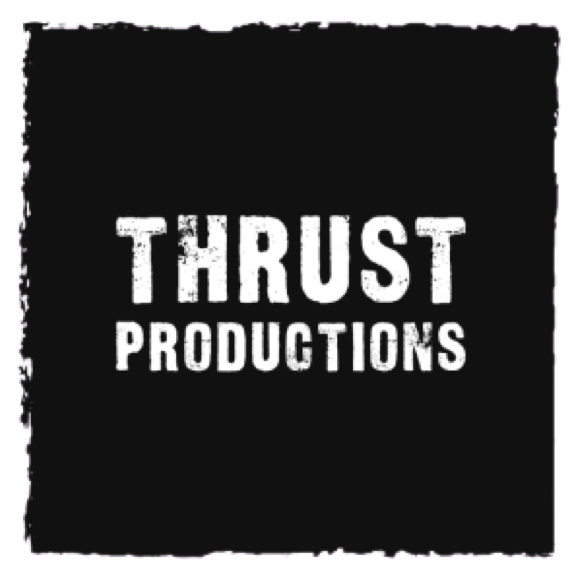SMOOTH FESTIVAL SHOWS DON’T HAPPEN BY ACCIDENT
It’s that time of year again — festival season is kicking off, and with it comes the usual dance behind the scenes. Festival season is where live music magic happens — but behind every unforgettable performance is an army of people working hard to make it smooth, safe, and spectacular. Speaking from experience, a truly great festival set doesn’t just happen. It's the result of preparation, teamwork, and a little bit of backstage magic.
The advance process for most festivals is already in full swing. If you haven’t started on yours yet, it’s really about time to get on with it! In the following post, we’re going to highlight some key things to keep in mind for a successful festival show.
Spoiler alert: it's not luck.
It all starts well before the show day
The best festival shows start weeks — more likely months — before anyone even steps foot on the festival site. If you’re an artist or part of a touring crew, make sure your latest rider, plot, and input list are actually the ones the production team sees. It’s amazing how often (years!) old versions float around — and nobody needs them confusing the set-up. Update your paperwork. Send it. Confirm it got through. Saves everyone a lot of drama later.
While it’s a good idea to share a link to your rider and refer in the rider that they can find the latest version in Dropbox/Google Drive, do also give the team a nudge if there are crucial updates made. They're working with many artists the same weekend, and it’s easy to miss changes. (And always include at the beginning of the rider the date it was last updated!) Trust that things are done as you expect — but double-check anyway.
Time is tight — respect the schedule
Festivals run on tight turnarounds. When you're given a 30-minute changeover, that doesn't mean maybe 30 minutes. It means exactly 30 minutes — including setup, troubleshooting, and getting the first note out. Showing up early enough to load in properly and double-check things isn’t about being “too keen” — it’s about giving yourself a chance to fix anything unexpected without the clock running out. Sticking with the schedule is crucial. Being late is not an option.
And do go through all the timings during the advance process — if you know in advance something might take you longer, bring it up with the festival team as soon as possible. If it’s known for weeks that you need more build time, it may actually be possible to play around with the schedule.
Bring what matters most yourself
If something is mission critical for your set — travel with it. If you decide to rely on the backline provided by the festival, be prepared that it may be shared with other artists or it’s not fully what you would want it to be. Festivals do their very best to provide everything you need, but things can happen. If that one special pedal or synth sound makes your show what it is — don’t gamble.
Also, keep in mind: laptops and iPads don’t love outdoor stages. Sun + heat + tech = not great. Plan accordingly. WiFi might not be the best either, so really plan on the most fool-proof solutions possible.
Trust your festival team
Festivals are big machines with a lot of moving parts. Most of the people working backstage have been there since early morning making sure every act sounds good, gets on and off stage in one piece and all other requirements are taken care of. Trust them and treat them with kindness — every single one is there to make your show happen, not to work against you. Respectful behaviour goes a long way.
If you need something, ask early and ask clearly. Festivals will always try to make it work — but it’s easier at 10 AM in advance than at 5 PM five minutes before your set. Cannot stress enough how everything starts during the advance process. If the festival team brings something to your attention — for example, advising on longer drive times than what Google Maps suggests — take their advice seriously. They likely know something that Google Maps doesn’t.
A couple of real-world reminders:
Your fancy lighting package isn’t going to do much at 2 PM when the sun is blazing directly on the stage. Focus on visuals that work in daylight — it’ll actually add to the experience for fans and save the crew from loading unnecessary gear in and out of the venue.
No, there aren’t any extra risers hiding backstage just because you decided on show day morning you want three extras for a keyboard that doesn’t even exist on the stage plots. These are not changes you make on a last minute.
Wireless frequencies aren’t magic — they need to be planned in advance or you’ll end up interfering with someone else’s show. This should be basic knowledge: if you’re bringing them, clear them with the festival team.
Bring your own guitar strap. Seriously.
And lastly: very few are headliners for whom the festival is willing and able to do the most. If you’re not a headliner, be prepared to compromise.
At the end of the day, the audience only sees the limited time the artist is on stage — but the real show starts way earlier, long before you even leave for the festival. When you’re prepared, respectful of time, ready with your gear, and open to working with the festival crew, you set yourself up for a much smoother, better day — and a better show for everyone.
One festival once said very nicely at the start of their advance process: "We’re here to help. Bring your best, and we’ll meet you there." Couldn’t have said it better myself.
Wishing everyone a wonderful summer season — and catch you all at the festivals!

